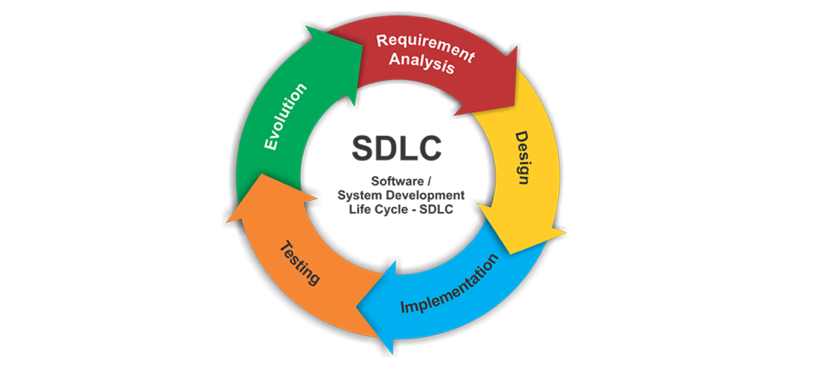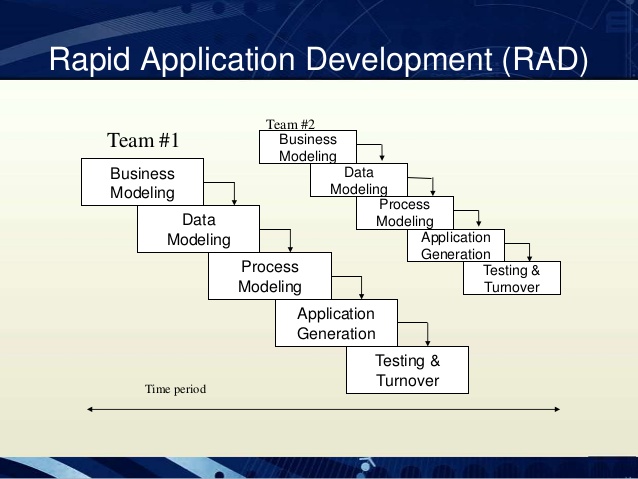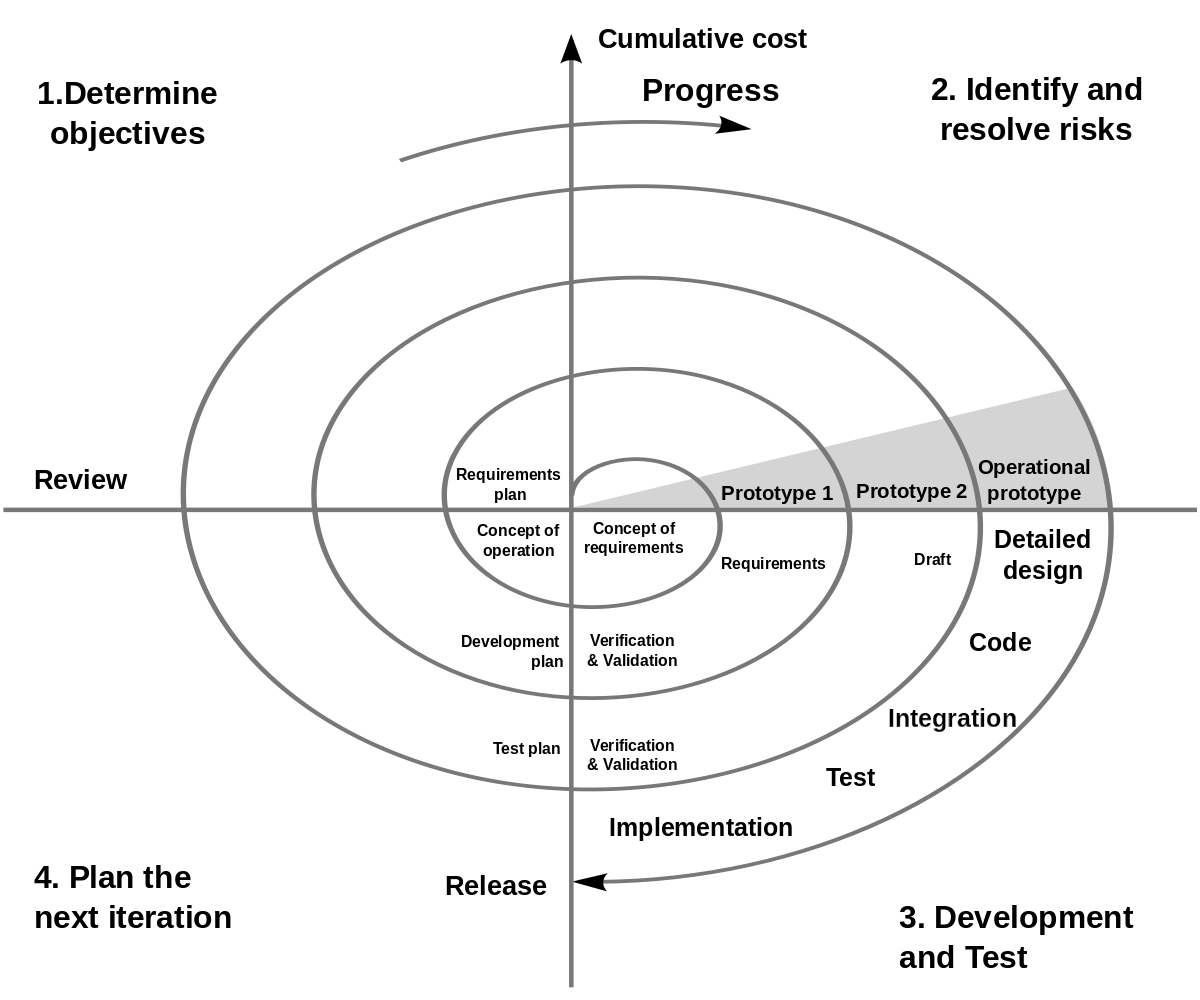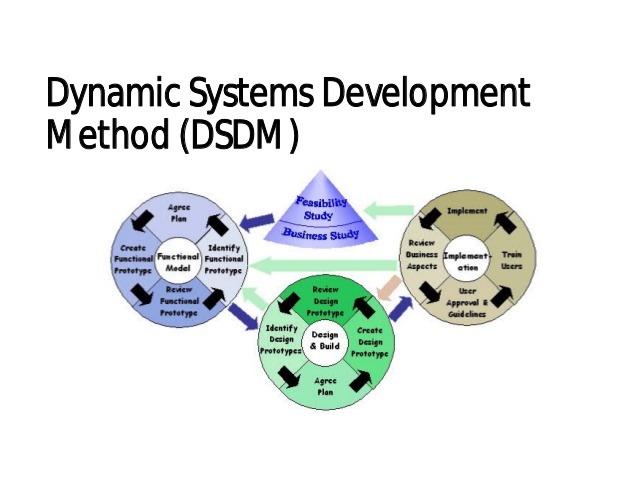6 Phases of Software Development Life-Cycle
Software Development Life Cycle is a term that explains the phases of creating a software component that integrates with software components to create the whole system. : moPharma
System is a broad and a general term, and as per to Wikipedia:
A system is a set of interacting or interdependent components forming an integrated whole

System Development Life Cycle (SDLC)
System Development Life Cycle (SDLC) is a series of six main phases to meet customer’s expectations.
Software Development Life Cycle (SDLC) is a process used by the software industry to design, develop and test high quality softwares. The SDLC aims to produce a high-quality software that meets or exceeds customer expectations, reaches completion within times and cost estimates.
SDLC is the acronym of Software Development Life Cycle.
It is also called as Software Development Process.
SDLC is a framework defining tasks performed at each step in the software development process.
ISO/IEC 12207 is an international standard for software life-cycle processes. It aims to be the standard that
defines all the tasks required for developing and maintaining software.
What is SDLC
SDLC is a process followed for a software project, within a software organization. It consists of a detailed plan describing how to develop, maintain, replace and alter or enhance specific software. The life cycle defines a methodology for improving the quality of software and the overall development process.
System Development Life Cycle Phases:
- System Planning
Defining the problems, the objectives and the resources such as personnel and costs.
Studying the ability of proposing alternative solutions after meeting with clients, suppliers, consultants and employees.
Studying how to make your product better than your competitors’.
- Analysis
- System Design
- Implementation and Deployment
- System Testing and Integration
- System Maintenance
The Planning phase is the most crucial step in creating a successful system, during this phase you decide exactly what you want to do and the problems you’re trying to solve, by:
After analyzing this data you will have three choices: develop a new system, improve the current system or leave the system as it is.
The end-user’s requirements should be determined and documented, what their expectations are for the system, and how it will perform. A feasibility study will be made for the software development project as well, involving determining whether it’s organizationally, economically, socially, technologically feasible. it’s very important to maintain strong communication level with the clients to make sure you have a clear vision of the finished product and its function.
The design phase comes after a good understanding of customer’s requirements, this phase defines the elements of a software development, the components, the security level, modules, architecture and the different interfaces and type of data that goes through the system.
A general system design can be done with a pen and a piece of paper to determine how the system will look like and how it will function, and then a detailed and expanded system design is produced, and it will meet all functional and technical requirements, logically and physically.
This phase comes after a complete understanding of software development requirements and specifications, it’s the actual construction process after having a complete and illustrated design for the requested system.
In the Software Development Life Cycle, the actual code is written here, and if the system contains hardware, then the implementation phase will contain configuration and fine-tuning for the hardware to meet certain requirements and functions.
In this phase, the system is ready to be deployed and installed in customer’s premises, ready to become running, live and productive, training may be required for end users to make sure they know how to use the system and to get familiar with it, the implementation phase may take a long time and that depends on the complexity of the system and the solution it presents.
Bringing different components and subsystems together to create the whole integrated system, and then Introducing the system to different inputs to obtain and analyze its outputs and behavior and the way it functions. Testing is becoming more and more important to ensure customer’s satisfaction, and it requires no knowledge in coding, hardware configuration or design.
Testing can be performed by real users, or by a team of specialized personnel, it can also be systematic and automated to ensure that the actual outcomes are compared and equal to the predicted and desired outcomes.
In this phase, periodic maintenance for the system will be carried out to make sure that the system won’t become obsolete, this will include replacing the old hardware and continuously evaluating system’s performance, it also includes providing latest updates for certain components to make sure it meets the right standards and the latest technologies to face current security threats.
These are the main six phases of the System Development Life Cycle, and it’s an iterative process for each project. It’s important to mention that excellent communication level should be maintained with the customer, and Prototypes are very important and helpful when it comes to meeting the requirements. By building the system in short iterations; we can guarantee meeting the customer’s requirements before we build the whole system.
Many models of system development life cycle came up from the idea of saving effort, money and time, in addition to minimizing the risk of not meeting the customer’s requirement at the end of project, some of theses models are SDLC Iterative Model, and SDLC Agile Model.
Systems analysis and design
The systems analysis and design (SAD) is the process of developing information systems (IS) that effectively use hardware, software, data, processes, and people to support the company's businesses objectives. System analysis and design can be considered the meta-development activity, which serves to set the stage and bound the problem. SAD can be leveraged to set the correct balance among competing high-level requirements in the functional and non-functional analysis domains. System analysis and design interacts strongly with distributed enterprise architecture, enterprise I.T. Architecture, and business architecture, and relies heavily on concepts such as partitioning, interfaces, personae and roles, and deployment/operational modeling to arrive at a high-level system description. This high level description is then further broken down into the components and modules which can be analyzed, designed, and constructed separately and integrated to accomplish the business goal. SDLC and SAD are cornerstones of full life cycle product and system planning.
Object-oriented analysis
Object-oriented analysis (OOA) is the process of analyzing a task (also known as a problem domain), to develop a conceptual model that can then be used to complete the task. A typical OOA model would describe computer software that could be used to satisfy a set of customer-defined requirements. During the analysis phase of problem-solving, a programmer might consider a written requirements statement, a formal vision document, or interviews with stakeholders or other interested parties. The task to be addressed might be divided into several subtasks (or domains), each representing a different business, technological, or other areas of interest. Each subtask would be analyzed separately. Implementation constraints, (e.g., concurrency, distribution, persistence, or how the system is to be built) are not considered during the analysis phase; rather, they are addressed during object-oriented design (OOD).
The conceptual model that results from OOA will typically consist of a set of use cases, one or more UML class diagrams, and a number of interaction diagrams. It may also include some kind of user interface mock-up. The input for object-oriented design is provided by the output of object-oriented analysis. Realize that an output artifact does not need to be completely developed to serve as input of object-oriented design; analysis and design may occur in parallel, and in practice the results of one activity can feed the other in a short feedback cycle through an iterative process. Both analysis and design can be performed incrementally, and the artifacts can be continuously grown instead of completely developed in one shot.
Some typical (but common to all types of design analysis) input artifacts for object-oriented:
Conceptual model: Conceptual model is the result of object-oriented analysis, it captures concepts in the problem domain. The conceptual model is explicitly chosen to be independent of implementation details, such as concurrency or data storage.
Use case: Use case is a description of sequences of events that, taken together, lead to a system doing something useful. Each use case provides one or more scenarios that convey how the system should interact with the users called actors to achieve a specific business goal or function. Use case actors may be end users or other systems. In many circumstances use cases are further elaborated into use case diagrams. Use case diagrams are used to identify the actor (users or other systems) and the processes they perform.
System Sequence Diagram: System Sequence diagram (SSD) is a picture that shows, for a particular scenario of a use case, the events that external actors generate, their order, and possible inter-system events.
User interface documentations (if applicable): Document that shows and describes the look and feel of the end product's user interface. It is not mandatory to have this, but it helps to visualize the end-product and therefore helps the designer.
Relational data model (if applicable): A data model is an abstract model that describes how data is represented and used. If an object databaseis not used, the relational data model should usually be created before the design, since the strategy chosen for object-relational mapping is an output of the OO design process. However, it is possible to develop the relational data model and the object-oriented design artifacts in parallel, and the growth of an artifact can stimulate the refinement of other artifacts.
Systems development life cycle topics
Management and control
The Systems Development Life Cycle (SDLC) phases serve as a programmatic guide to project activity and provide a flexible but consistent way to conduct projects to a depth matching the scope of the project. Each of the SDLC phase objectives are described in this section with key deliverables, a description of recommended tasks, and a summary of related control objectives for effective management. It is critical for the project manager to establish and monitor control objectives during each SDLC phase while executing projects. Control objectives help to provide a clear statement of the desired result or purpose and should be used throughout the entire SDLC process. Control objectives can be grouped into major categories (Domains), and relate to the SDLC phases as shown in the figure.
To manage and control any SDLC initiative, each project will be required to establish some degree of a Work Breakdown Structure (WBS) to capture and schedule the work necessary to complete the project. The WBS and all programmatic material should be kept in the “Project Description” section of the project notebook. The WBS format is mostly left to the project manager to establish in a way that best describes the project work. There are some key areas that must be defined in the WBS as part of the SDLC policy. The following diagram describes three key areas that will be addressed in the WBS in a manner established by the project manager.
Work breakdown structured organization
The upper section of the Work Breakdown Structure (WBS) should identify the major phases and milestones of the project in a summary fashion. In addition, the upper section should provide an overview of the full scope and timeline of the project and will be part of the initial project description effort leading to project approval. The middle section of the WBS is based on the seven Systems Development Life Cycle (SDLC) phases as a guide for WBS task development. The WBS elements should consist of milestones and “tasks” as opposed to “activities” and have a definitive period (usually two weeks or more). Each task must have a measurable output (e.x. document, decision, or analysis). A WBS task may rely on one or more activities (e.g. software engineering, systems engineering) and may require close coordination with other tasks, either internal or external to the project. Any part of the project needing support from contractors should have a Statement of work (SOW) written to include the appropriate tasks from the SDLC phases. The development of a SOW does not occur during a specific phase of SDLC but is developed to include the work from the SDLC process that may be conducted by external resources such as contractors and struct.
Baselines in the SDLC
Baselines are an important part of the Systems Development Life Cycle (SDLC). These baselines are established after four of the five phases of the SDLC and are critical to the iterative nature of the model .Each baseline is considered as a milestone in the SDLC.
Functional Baseline: established after the conceptual design phase.
Allocated Baseline: established after the preliminary design phase.
Product Baseline: established after the detail design and development phase.
Updated Product Baseline: established after the production construction phase.
Complementary to SDLC
Complementary Software development methods to Systems Development Life Cycle (SDLC) are:
Software Prototyping
Joint Applications Design (JAD)
Rapid Application Development (RAD)
Extreme Programming (XP); extension of earlier work in Prototyping and RAD.
Open Source Development
End-user development
Different Software Development Approaches:
Agile Software Development
Crystal Methods
Dynamic Systems Development Model (DSDM)
Extreme Programming (XP)
Feature Driven Development (FDD)
Joint Application Development (JAD)
Lean Development (LD)
Rapid Application Development (RAD)
Rational Unified Process (RUP)
Scrum
Spiral
Systems Development Life Cycle (SDLC)
Waterfall (a.k.a. Traditional)
If you are looking to build your next (or first) mobile app and need help with one or more of these steps, you’re in luck! The moPharma Group welcomes app owners at any stage in this process. Whether you are a startup or Fortune 50 company, we have the team and knowledge needed to deliver a fantastic mobile app. Please don’t hesitate to write us today.





Discuss about post